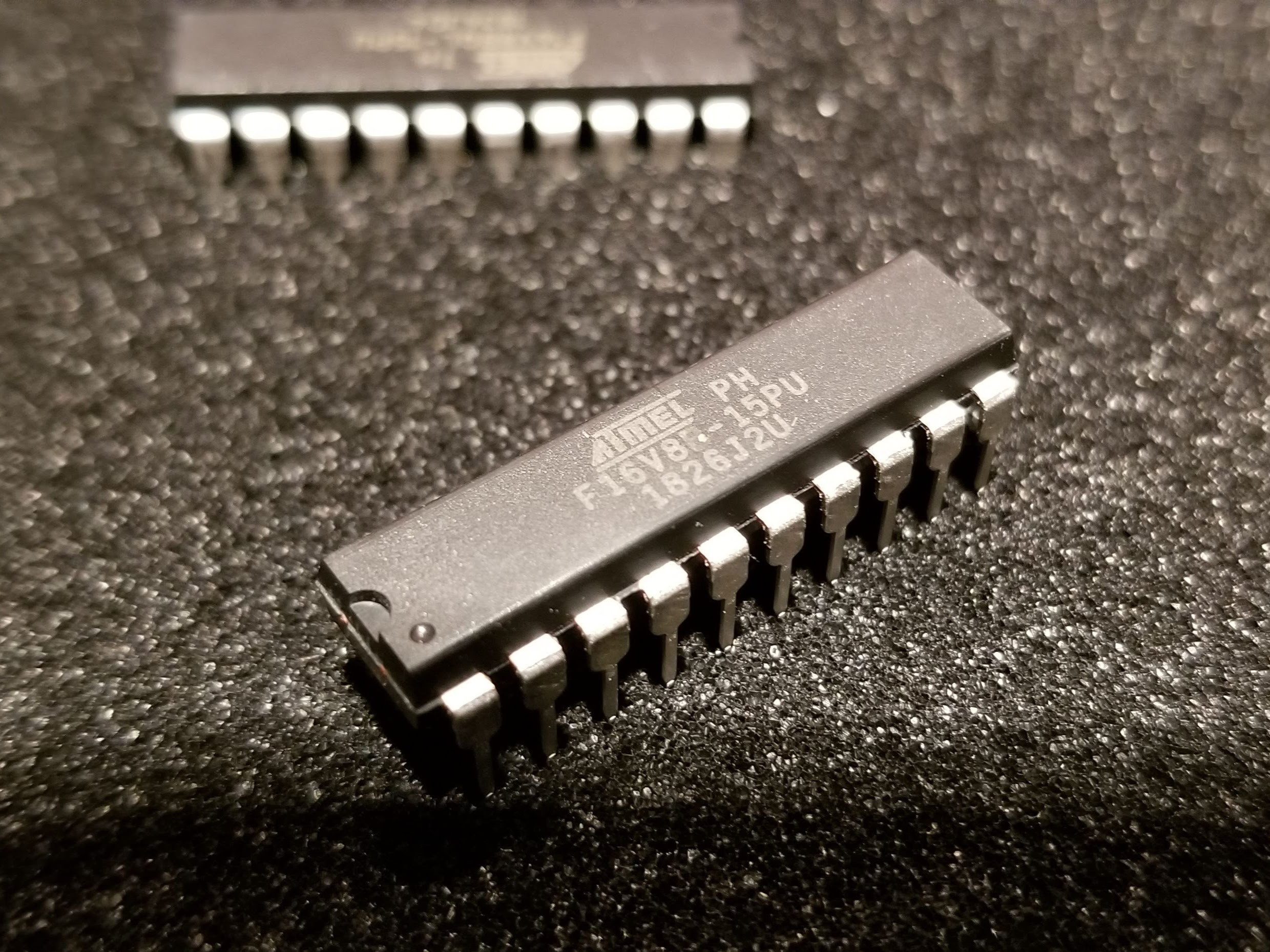8 weeks in and the CPU is running, although it's not doing anything useful yet. The initial task was to get all the timing circuits in place and measure the performance of the system.
Only 10 chips are needed to implement the clock circuit, program counter, instruction register, and CPU state machine. This would have been 15 chips if it wasn't for this guy below.

The initial design was all 74-series chips and it needed 50 in total. A single programmable array logic (PAL) can absorb 6 of the 74-series chips. The first PALs were introduced in 1978 and included the 16R8. The device show above is the modern equivalent knows as a GAL (generic array logic). This chip can emulate a variety of old PAL devices and in this case it is being used as the 1978-era 16R8.
I could go further though. The table below shows the possible chip count reductions using more PALs:
| PALs | TTL | Other | Total | |
|---|---|---|---|---|
| Original Design | 0 | 50 | 5 | 55 |
| Current Design | 1 | 44 | 5 | 50 |
| Optional Design | 5 | 30 | 5 | 40 |
The optional design would replace the 8-bit counters that currently require 3 chips (two 4-bit counters + buffer) with a single chip. There would be 3 of these 8-bit counter PALs. The rest of the instruction decode logic and bus state machine would also fit in a single PAL. Note: Control signals used by the counters would require the larger 24-pin 22R10 devices.
Consolidating 6 chips in to one was an easy choice. The current plan is to stop there though. The design files for the PAL have been uploaded along with a simulation showing different execution states for the CPU State Machine.
 Alastair Hewitt
Alastair Hewitt
Discussions
Become a Hackaday.io Member
Create an account to leave a comment. Already have an account? Log In.
nice work! love the docs on using the 16V8 stuff! i've got a massive number of those devices (around 10k), but have hesitated in using them for my DYI CPU designs other than for the hex decoder - https://hackaday.io/project/163274-4-bit-full-hex-decoder
Are you sure? yes | no